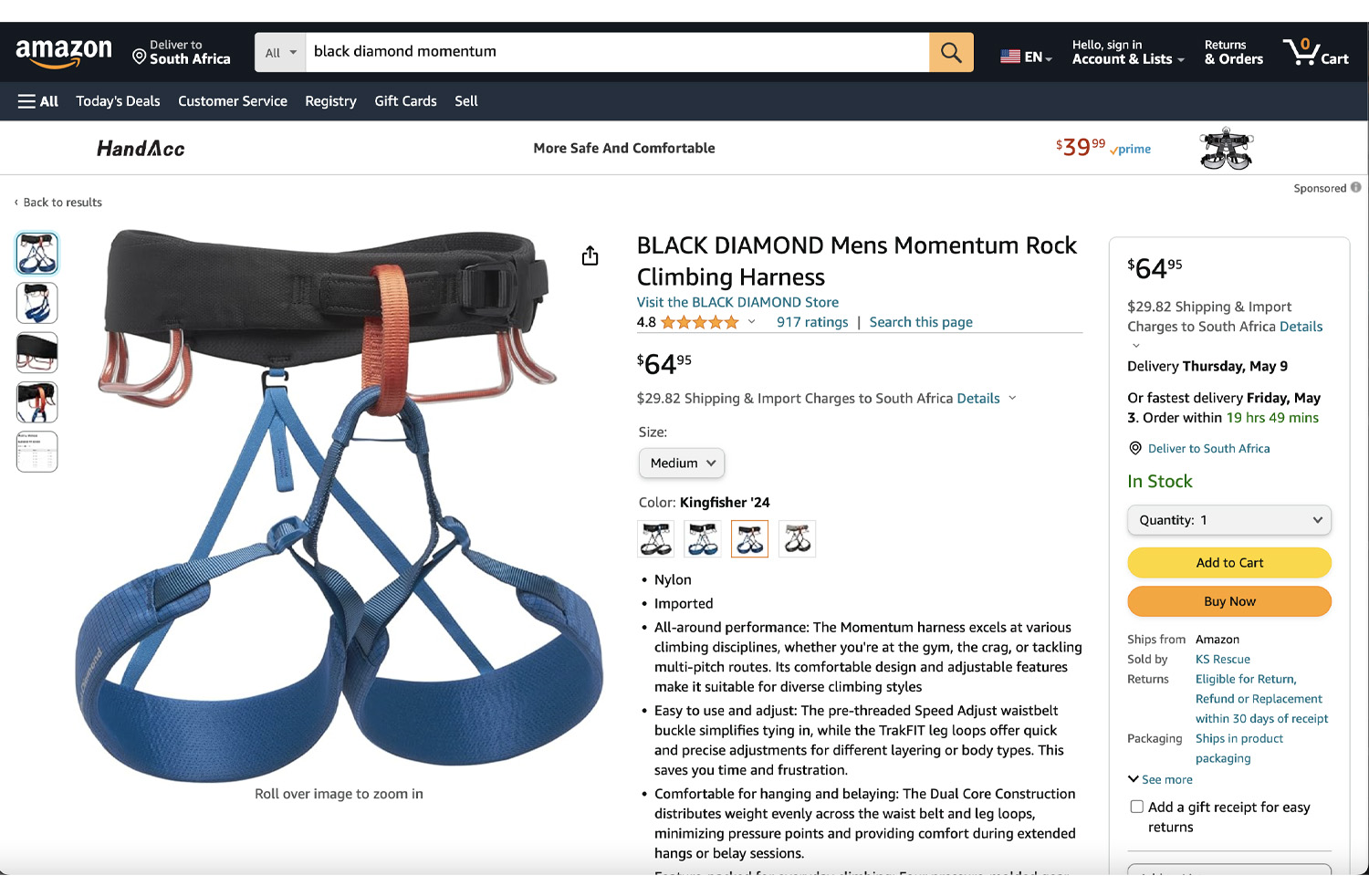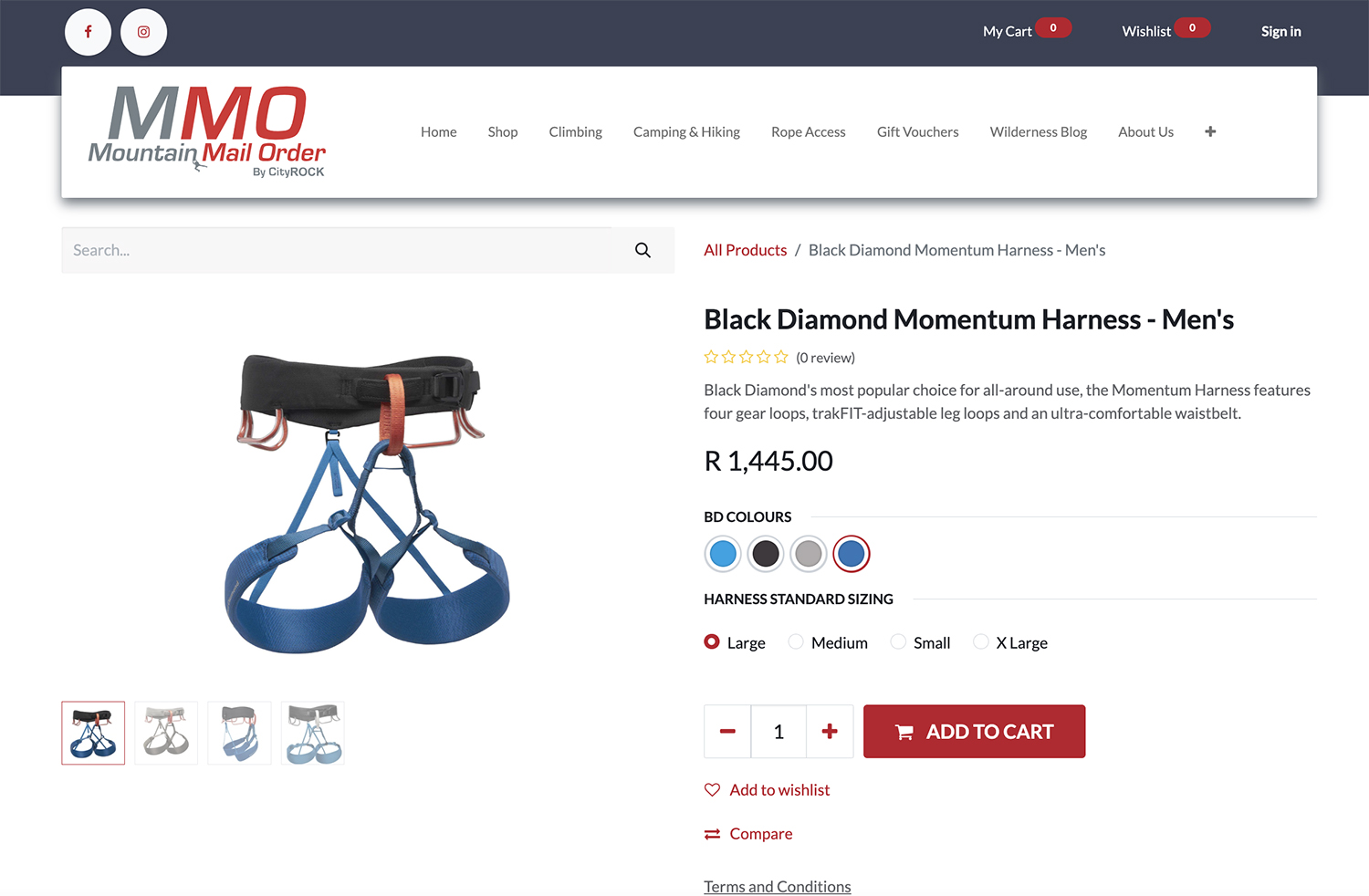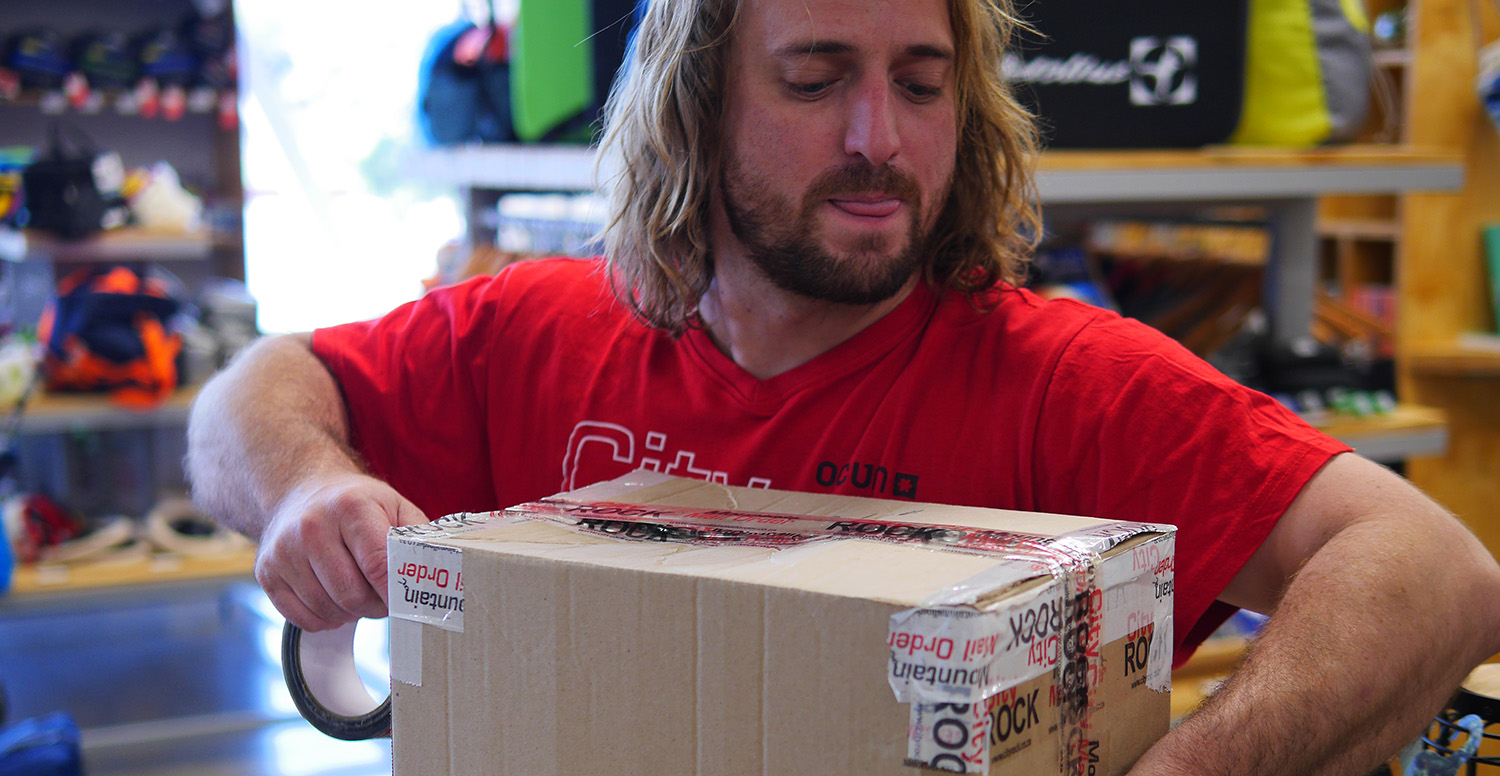Should I Import or Buy Local?
With the growth of the e-commerce market, South Africans are increasingly trusting when it comes to buying online. Saving on the hassle of having to leave your bed to go shopping, you can sit and scroll through an unlimited number of products from all around the world. With just a few clicks, and a couple of days of waiting, your shiny new gear is jetted around the world straight to your door. It’s as easy as that… or is it?
In the climbing world, the lure of low prices and shiny gear from some European website advertising on Instagram is often accompanied by a lack of information on the whole process of importing gear. The purpose of this blog is to shine a light on the subject so that you can make more informed decisions, and take your purchasing decisions into your own hands.
THE OPTIONS
There are several options that a climber has when they want to buy gear; all of these have pros and cons. The two avenues we are going to look at are (a) buying internationally (i.e. importing gear) and (b) buying locally. Both of these have their own unique upsides and downsides, which should be considered when making decisions about buying gear.
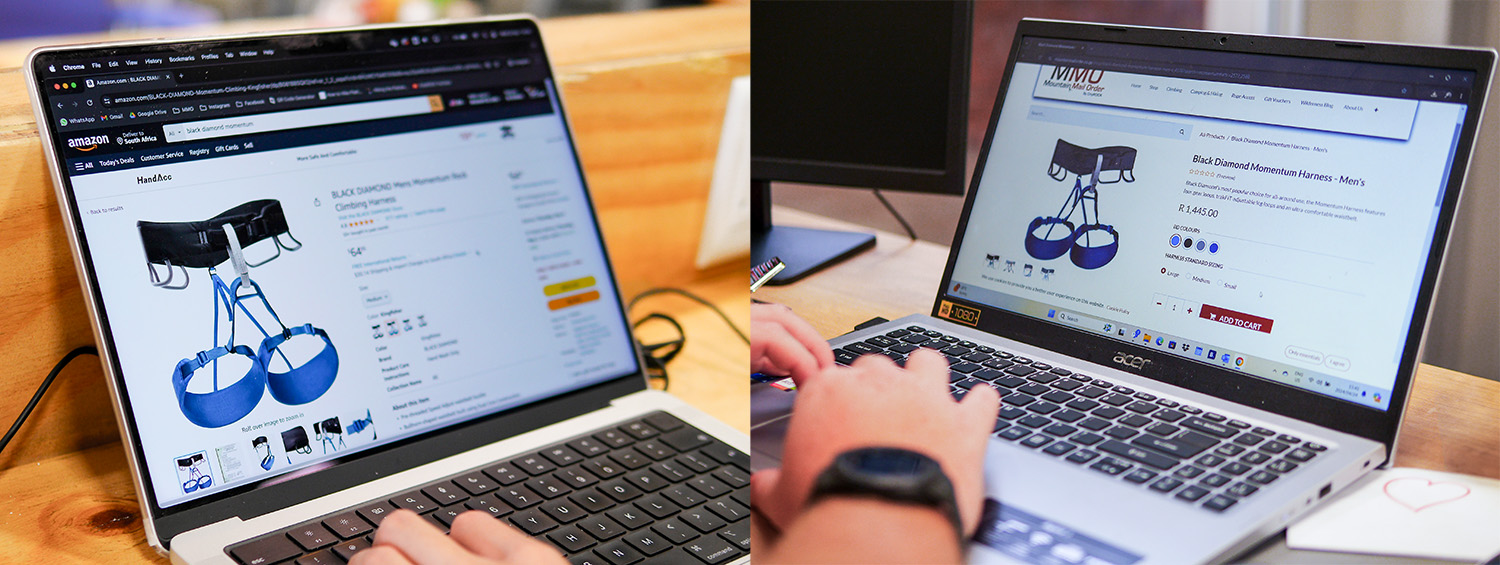
BUYING INTERNATIONALLY
The Pros
There is a plethora of large international gear shops that retail online and sell/ship directly to South Africa. These shops have been around for a long time and have built a reputation for being reliable and trustworthy; their legitimacy is not questioned. Often you will notice the price of climbing gear on these websites is more attractive than the prices in local South African shops.
There are a few reasons for this, one of the biggest being basic economies of scale; it’s kind of like throwing a party – the more people you invite, the cheaper it becomes for each person because you can buy in bulk and share resources like food, drinks, entertainment costs, etc. Another reason is that many international shops have warehouses closer to the country where the product was made, reducing shipping costs.
A big pro for buying internationally is also the range of gear and apparel to which you’ll have access; you will probably find brands, styles and products that just aren't available in your local stores.
The Cons
When browsing big international online gear shops, the prices can often seem too good to be true… because they are. More often than not there are hidden costs involved with importing gear, including customs duty, VAT, handling fees and shipping; they are also normally more than what you would expect.
As is the standard, all items coming into the country will go through customs, who will then assess the items to determine which tariff they fall under. Depending on how the goods are classified, you will then be charged anything from 0% to 45% duty; that means almost half the value of what you are buying could go to the tax man. You will then be charged 15% VAT on top of the new amount. Handling fees are fairly small and are normally charged per order and not per item.
Let’s use the Black Diamond Momentum harness as an example:
If you were to purchase this from Amazon, without shipping and duties, the harness would be $64.95, which is R1250,68 (according to the current exchange rates). Adding on the shipping and Amazon estimate of duty, your total comes up to $94.77, approximately R1824. This amount excludes VAT and is still roughly R400 more expensive than buying it on Mountain Mail Order, where it is currently listed for R1445.

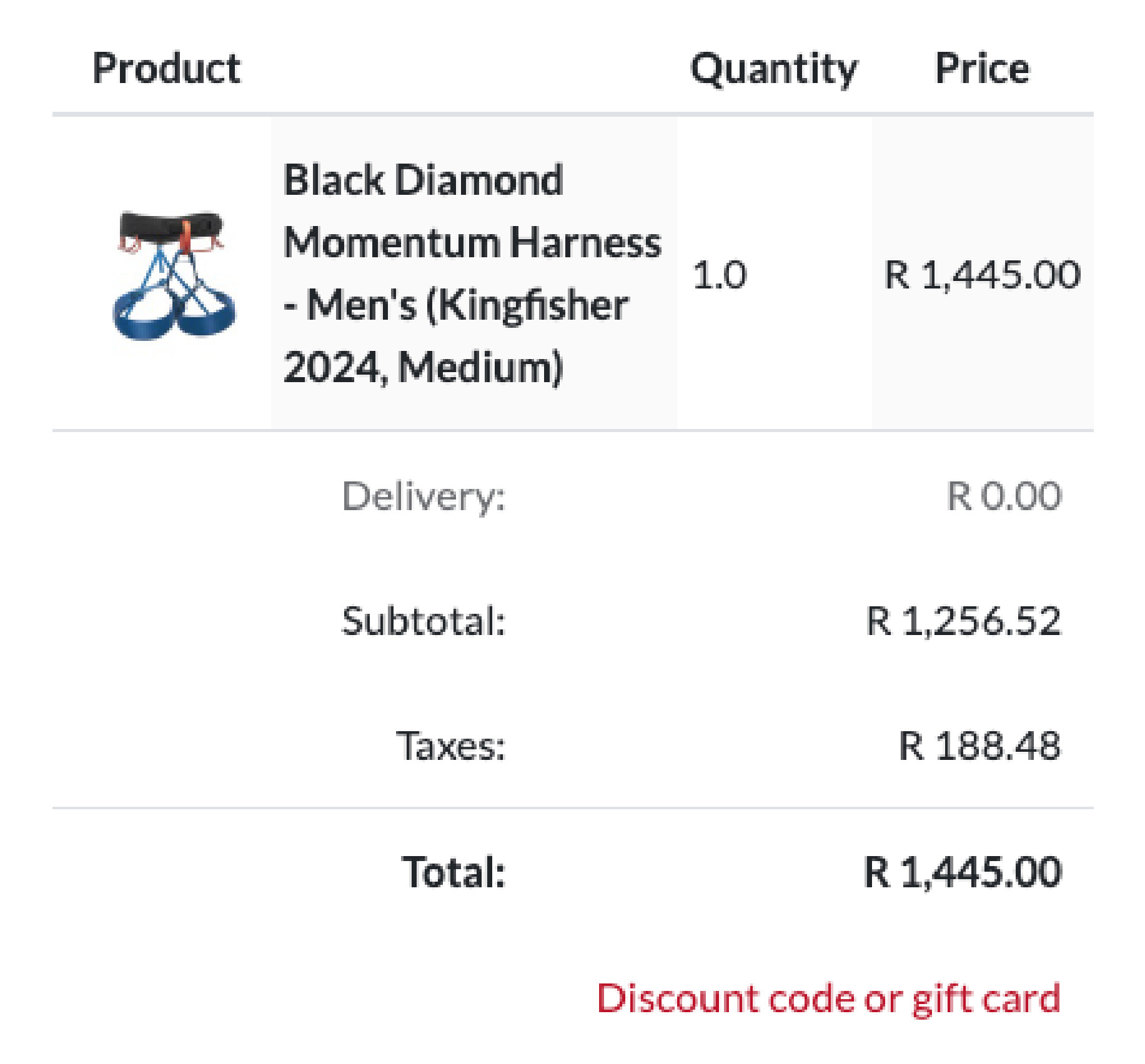
The shipping costs for importing are determined by various factors, including the size and weight of the package, whether you are using the SA Postal Service or a private courier, the choice between air freight or ocean freight, and where the package is shipping from. Going through a private courier company will be the fastest and safest way to ensure that your goods get to you, but this could cost anywhere from R500 to R2000 depending on the size and how quickly you want your items. Going through the South African Post Office is by far the most affordable method, but you pay with your time and stand the risk of your items being lost or otherwise failing to reach you.
Another factor to consider when buying internationally is the lack of local support for the items you have purchased; for instance, warranties become an expensive and lengthy exercise when you have to ship the item back to Europe. Returns, replacements and refunds (in the event that the item doesn’t perform or fit as expected) are also far more complicated with imported items. Even if the item is stocked in South African shops, these stores have no obligation to assist you with returns or replacements.
Finally, an often-overlooked aspect of importing is the question of why these products seem so affordable in the first place. Often, these great deals are for old stock that hasn’t sold; climbing gear has a limited lifetime as per the manufacturer's specification, which means that if your product has a lifetime of 10 years and you buy it in its 6th year, you can only get 4 years of good life out of it.
BUYING LOCALLY
The Pros
There are so many great reasons to shop locally! Firstly, you will have support throughout the entire purchasing cycle, which makes it much easier to organise returns, replacements and refunds, and take advantage of warranties and free repair offers that accompany some products (such as Osprey backpacks). Plus, if there are ever any questions of safety or you need assistance, there will be a physical person for you to contact.
Furthermore, convenience is king and buying locally allows you to get your goodies immediately; there are no extended waiting times, no worrying about your package getting lost in the post, and no need to fight about technicalities with customs agents. And, of course, buying locally in-store offers the opportunity to physically inspect and try on the gear before committing. With climbing shoes in particular, it is incredibly important to try before you buy; there is nothing worse than buying shoes online, waiting two months for them to finally arrive, only to realise they are two sizes off when you eventually try them on. Even though many websites have a helpful sizing guide, not many of them take into consideration the shape and volume of your foot – a human ‘product guide’, on the other hand, will take all these factors into account and is there to answer your questions and help you get the best bang for your buck.
Supporting local retailers also often means supporting the local climbing scene; most of the big local retailers are owned and operated by avid climbers. The time and money these companies put into the climbing community goes beyond business, such as sponsoring events and athletes, bolting new crags, running climbing events, and more.
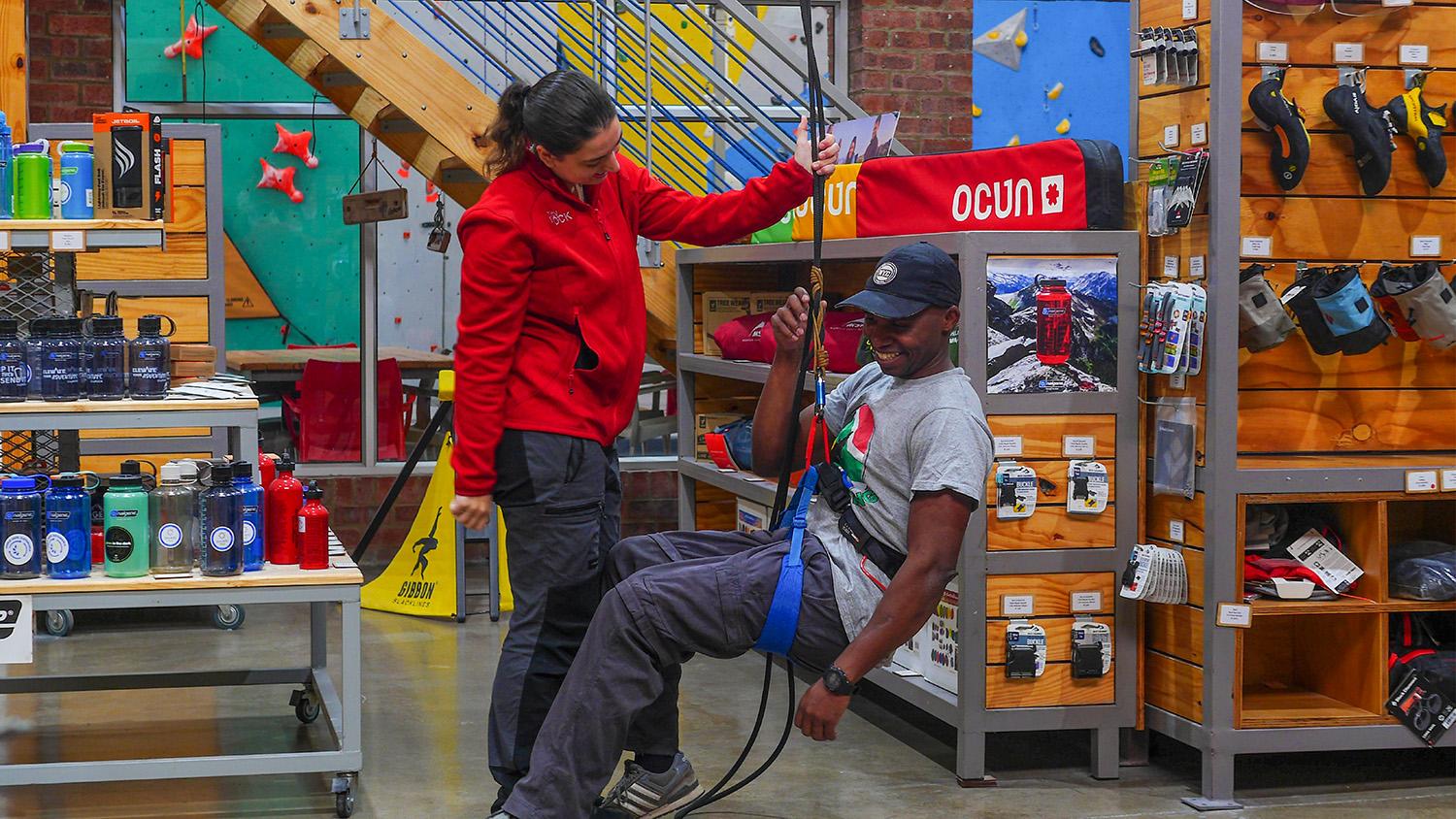
The Cons
There are a few limitations when buying locally, chief of which is the relative lack of variety in brands and products (when compared to the hundreds that are at your fingertips when browsing online). Because the market isn’t as big in South Africa as it is in Europe and the United States, local retailers are often limited in what they can afford to stock.
South Africa is also very far away from the countries that manufacture much of the world’s climbing equipment, which means that shipments can take a long time to arrive and local stores might have stock delays or gaps in the size curve.
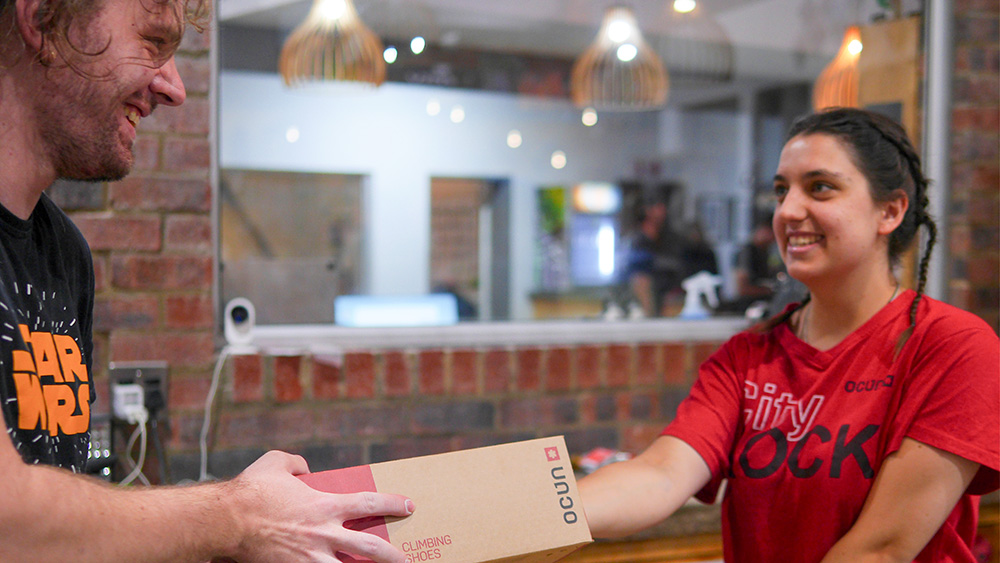
IN A NUTSHELL
At the end of the day, buying internationally and locally both have advantages and disadvantages. Due to VAT, duties and shipping it generally ends up being more affordable to buy locally, and you will have the added support during the purchasing cycle.
There is also the popular option of asking friends and family visiting from overseas to bring products with them, but legally you will still need to declare the items and pay the duty.
On the whole, we would suggest shopping through your local gear stores wherever possible to save yourself some cash and hassle and support your local community.

